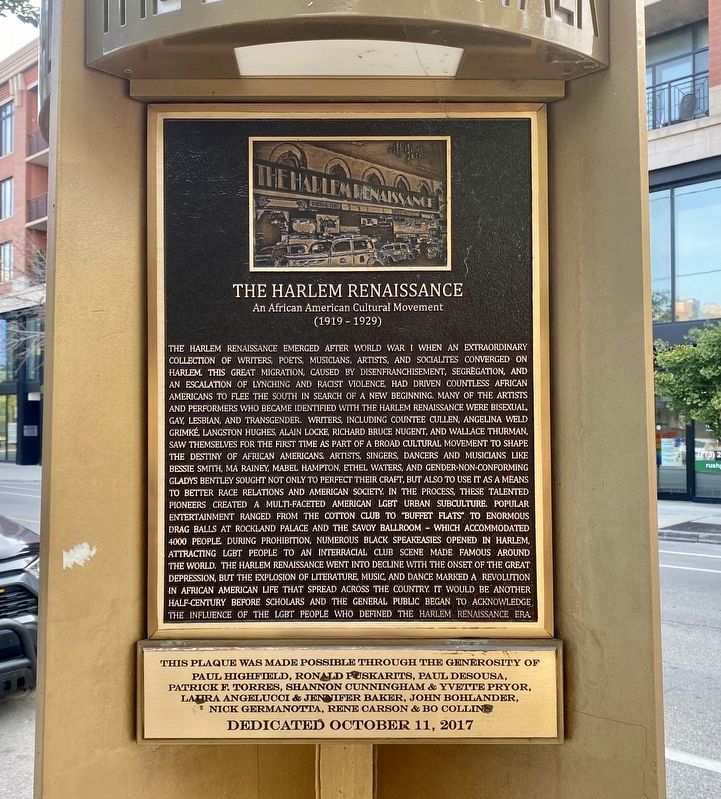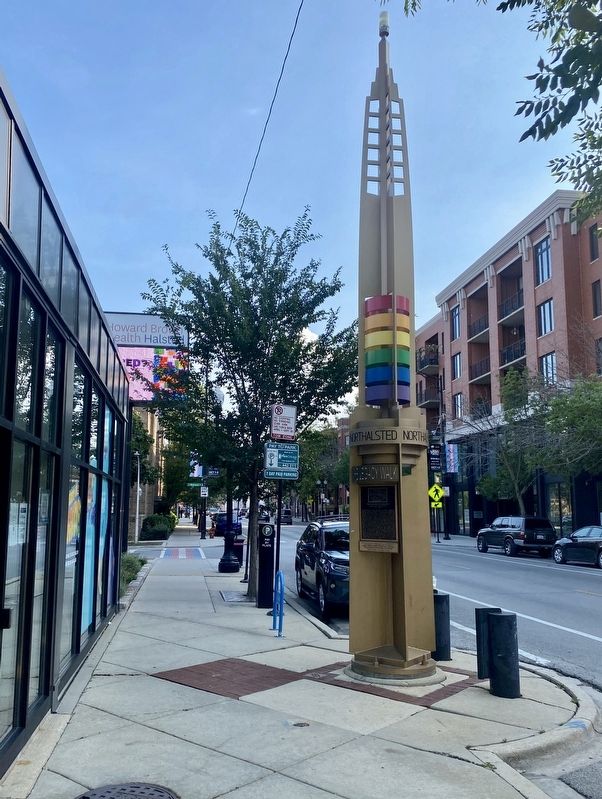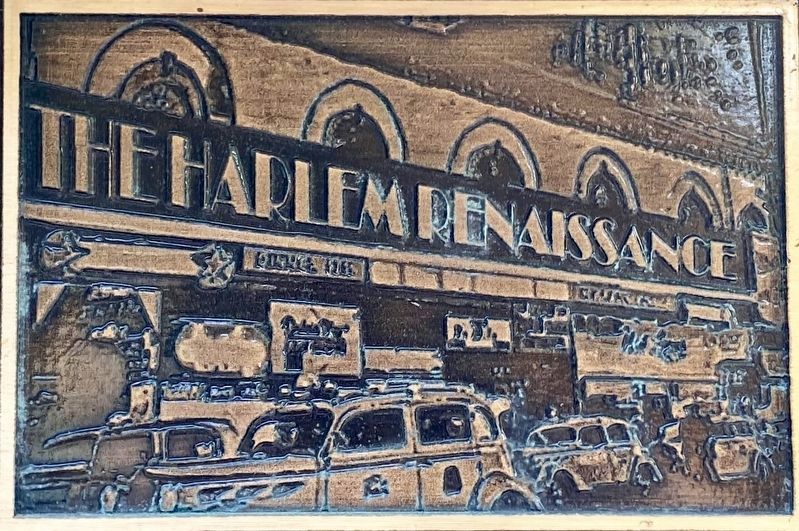Lake View East in Chicago in Cook County, Illinois — The American Midwest (Great Lakes)
The Harlem Renaissance
— The Legacy Walk —
The Harlem Renaissance
An African American Cultural Movement
1919 - 1929
The Harlem Renaissance emerged after World War I when an extraordinary collection of writers, poets, musicians, artists, and socialites converged on Harlem. This Great Migration, caused by disenfranchisement, segregation, and an escalation of lynching and racist violence, had driven countless African Americans to flee the south in search of a new beginning. Many of the artists and performers who became identified with the Harlem Renaissance were bisexual, gay, lesbian, and transgender. Writers, including Countee Cullen, Angelina Weld Grimké, Langston Hughes, Alain Locke, Richard Bruce Nugent and Wallace Thurman, saw themselves for the first time as part of a broad cultural movement to shape the destiny of African Americans. Artists, singers, dancers and musicians like Bessie Smith, Gertrude Ma Rainey, Mabel Hampton, Ethel Waters, and gender-non-conforming Gladys Bentley sought not only to perfect their craft, but also to use it as a means to better race relations and American society. In the process, these talented pioneers created a multi-faceted American LGBT urban subculture. Popular entertainment ranged from the Cotton Club to “buffet flats” to enormous drag balls at Rockland Palace and the Savoy Ballroom – which accommodated 4000 people. During prohibition, numerous black speakeasies opened in Harlem, attracting gay men and lesbians into a interracial club scene made famous around the world. The Harlem Renaissance went into decline with the onset of the Great Depression, but the explosion of literature, music, and dance marked a revolution in African American life that spread across the country. It would be another half-century before scholars and the general public began to acknowledge the influence of the LGBT people who defined the Harlem Renaissance Era.
Erected 2017 by The Legacy Project.
Topics. This historical marker is listed in these topic lists: African Americans • Arts, Letters, Music • Entertainment. A significant historical year for this entry is 1919.
Location. 41° 56.478′ N, 87° 38.954′ W. Marker is in Chicago, Illinois, in Cook County. It is in Lake View East. Marker is on North Halsted Street north of West Melrose Street, on the right when traveling north. Touch for map. Marker is at or near this postal address: 3245 North Halsted Street, Chicago IL 60657, United States of America. Touch for directions.
Other nearby markers. At least 8 other markers are within walking distance of this marker. The Pink Triangle (here, next to this marker); Freddie Mercury (a few steps from this marker); Sylvester (a few steps from this marker); Bayard Rustin (about 400 feet away,
measured in a direct line); Cole Porter (about 400 feet away); Dr. Sally K. Ride (about 400 feet away); Pyotr Ilyich Tchaikovsky (about 400 feet away); Walt Whitman (about 600 feet away). Touch for a list and map of all markers in Chicago.
Also see . . .
1. Harlem Renaissance (Wikipedia).
"The Harlem Renaissance was an intellectual and cultural revival of African American music, dance, art, fashion, literature, theater and politics centered in Harlem, Manhattan, New York City, spanning the 1920s and 1930s. At the time, it was known as the "New Negro Movement", named after The New Negro, a 1925 anthology edited by Alain Locke. The movement also included the new African American cultural expressions across the urban areas in the Northeast and Midwest United States affected by a renewed militancy in the general struggle for civil rights, combined with the Great Migration of African American workers fleeing the racist conditions of the Jim Crow Deep South, as Harlem was the final destination of the largest number of those who migrated north."(Submitted on January 3, 2022.)
2. The Harlem Renaissance (The NYC LGBT Historic Sites Project). A selection of 13 historical sites featuring "...literary salons, neighborhood institutions, public art, and residences that reflect the impact of the Black LGBT community on one of the 20th century’s most significant cultural movements." (Submitted on January 3, 2022.)
3. A Spectacle in Color: The Lesbian and Gay Subculture of Jazz Age Harlem (Eric Garber). A short but detailed essay on the wider cultural impact that the gay black subculture wrought, with an emphasis on the people involved. (Submitted on January 3, 2022, by Andrew Ruppenstein of Lamorinda, California.)
Credits. This page was last revised on January 30, 2023. It was originally submitted on January 3, 2022, by Andrew Ruppenstein of Lamorinda, California. This page has been viewed 466 times since then and 98 times this year. Photos: 1, 2, 3. submitted on January 3, 2022, by Andrew Ruppenstein of Lamorinda, California.


